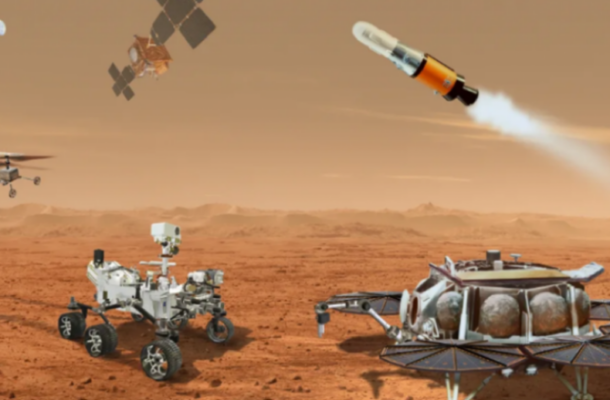Dive into the complexities surrounding NASA's Mars Sample Return (MSR) program as it encounters design, cost, and scheduling hurdles. Explore the ambitious mission's potential budget concerns and the need for collaboration with the European Space Agency (ESA).
Introduction: NASA's ambitious endeavor to bring Martian samples back to Earth for in-depth analysis is facing substantial challenges, raising questions about the feasibility of the Mars Sample Return (MSR) program. A recent report from NASA's MSR Program sheds light on the hurdles related to design intricacies, escalating costs, and intricate scheduling. As the space agency strives to unravel the mysteries of Mars, the journey home seems to be fraught with complexities.
The Grand Plan: Retrieving Martian Geological Samples
Landing, Collecting, and Returning
The MSR program outlines a comprehensive plan involving the landing of spacecraft on Mars, meticulous collection of geological samples, and their safe journey back to Earth. While a spacecraft is already present on the red planet, a dedicated ship is anticipated for the return mission, a venture financed and developed by the European Space Agency (ESA).
Collaboration with ESA
Acknowledging the mission's complexity, the report emphasizes the crucial need for enhanced coordination between NASA and ESA. The collaborative effort between the two space agencies is imperative to overcome the intricate challenges posed by the MSR mission, showcasing the significance of global cooperation in space exploration.
Budgetary Concerns: The Balancing Act
Escalating Costs
The report reveals that the MSR mission's complexity might lead to a staggering budget ranging between $8 billion and $11 billion. As NASA grapples with ever-increasing cost estimates, the program faces scrutiny and political pressure, prompting a reevaluation of the overall architecture and budget.
Reevaluating Program Architecture
In response to concerns surrounding escalating costs, NASA is currently reassessing the fundamental architecture of the MSR program and its financial framework. This introspection reflects the agency's commitment to balancing the scientific importance of the mission with fiscal responsibility.
Global Competition: China's Tianwen-3 Mission
Rivalry in Mars Exploration
While NASA navigates its challenges, China emerges as a formidable competitor with its Tianwen-3 mission. Set to launch at the close of this decade, Tianwen-3 aims to collect samples from Mars, intensifying the global race for unraveling the secrets of the red planet.
In conclusion, NASA's pursuit of bringing Mars samples to Earth encounters a formidable journey fraught with design intricacies, financial challenges, and the need for international collaboration. As the space agency confronts the hurdles posed by the MSR program, the global space race intensifies, with China's Tianwen-3 mission adding a competitive edge to the quest for Martian exploration. The fate of NASA's ambitious venture now hinges on overcoming these obstacles and ensuring the safe return of Martian secrets to Earth.


Comments